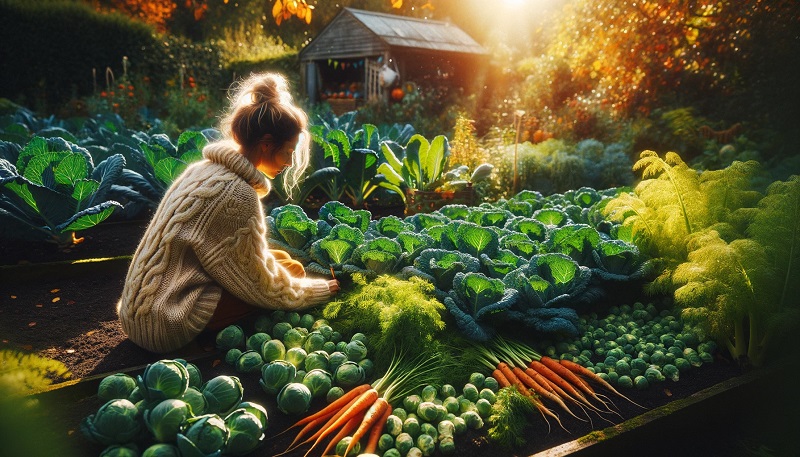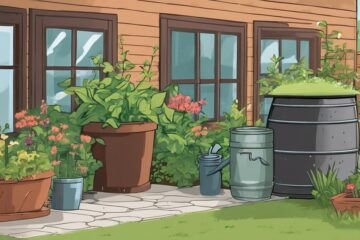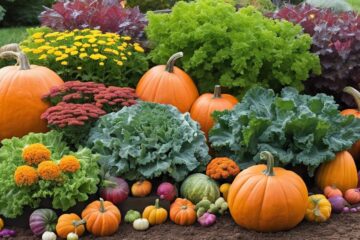When it comes to cold-season vegetable gardening, you may have heard that certain tips can make all the difference in your success. But are these tips really as crucial as they’re made out to be? Perhaps you’re curious to know how a few simple strategies can transform your winter garden into a thriving oasis of fresh produce.
Stay tuned to uncover the three best beginner tips for mastering cold-weather vegetable gardening and take your gardening skills to the next level.
Essential Winter Gardening Tools
To gear up for successful cold-season vegetable gardening, equip yourself with essential winter gardening tools that will make your tasks more manageable and efficient.
Thermal gardening gloves are essential for working in cold weather, providing warmth and dexterity.
Cold frames or greenhouses help create a stable growing environment, protecting crops from harsh winter conditions.
Specialized digging tools are crucial for working with compacted soil, ensuring proper aeration for plant care.
Insulating crops is also important to shield them from the cold and excess rainfall, promoting healthy growth throughout the winter season.
Choosing the Right Cold-Season Vegetables
When venturing into cold-season vegetable gardening, it’s crucial to choose the right plants for success. Consider cold-season vegetables like broccoli, kale, carrots, and Brussels sprouts for optimal growth in cooler temperatures. These winter warriors are not only well-suited for cold weather conditions but can also thrive, adding life and color to your garden during the colder months.
For beginners, focusing on frost-tolerant varieties is essential. These plants can withstand the chilly temperatures and, in some cases, such as with kale and Brussels sprouts, even become sweeter after a frost. Opting for vegetables with a shorter maturity period ensures that you can enjoy a successful harvest before the deep freeze of winter sets in. Raised beds can be particularly beneficial for these cool-season crops, offering better temperature control and drainage, which is vital for their growth.
To ensure you’re selecting the best varieties for your garden, consider reaching out to your local Cooperative Extension Service for recommendations tailored to your area. By planting resilient varieties like broccoli, kale, carrots, and Brussels sprouts, and utilizing strategies such as choosing frost-tolerant crops and optimizing your garden setup with raised beds, you can extend your growing season and enjoy fresh produce even as the temperatures drop. Remember, the key to thriving cold-season vegetable gardening lies in choosing the right crops that are adapted to cooler weather and your specific climate and soil conditions. Happy gardening!
Effective Frost Protection Techniques
As the chill of autumn deepens into the cold of winter, preparing your garden for colder temperatures becomes paramount. Implementing effective frost protection techniques is not just about survival; it’s about ensuring the continued growth and vitality of your plants during winter gardening. Here are some essential strategies to safeguard your garden against the harsh effects of cold temperatures
- Use Frost Cloth or Garden Fabric: Covering your plants with frost cloth or garden fabric can provide a crucial shield against freezing temperatures. These materials are designed to let through light and water while keeping the cold at bay, making them an ideal choice for frost protection.
- Steer Clear of Plastic Covers: While it might be tempting to use plastic sheets as a quick cover, avoid placing plastic directly on your plants. Plastic can trap moisture against the foliage, leading to frost damage and even disease. If you must use plastic, support it with stakes to keep it from touching the plants and remove it during the day to let excess moisture escape.
- Apply Mulch for Insulation: Mulching around your plants is more than just a way to keep weeds at bay; it’s a vital technique for retaining soil heat and protecting roots from frost. A generous layer of mulch acts as an insulating blanket, keeping the ground warmer and reducing the risk of root damage.
- Water Before a Freeze: Interestingly, watering your plants before a freeze can help insulate them against sudden temperature drops. Moist soil retains heat better than dry soil, providing extra warmth around your plants’ roots. Just be sure to water early enough in the day so that the water has time to absorb before temperatures plummet at night.
- Erect Windbreaks or Cold Frames: For added protection, consider setting up windbreaks or cold frames around your more vulnerable plants. Windbreaks can reduce wind chill, a significant factor in frost damage, while cold frames offer a more stable microclimate for tender vegetation.
- Stay Vigilant: Perhaps the most crucial strategy is vigilance. Keep an eye on weather forecasts and be ready to act when frost is predicted. Being prepared to deploy covers or other protection methods at short notice can make the difference between a garden that thrives and one that merely survives the winter.
By integrating these frost protection techniques into your winter gardening routine, you can create a more resilient garden that withstands the cold months. Remember, a little preparation goes a long way in ensuring the health and productivity of your cold-season vegetables and plants. Happy gardening!
Optimizing Soil Health for Cold-Season Crops
The foundation of a thriving cold-season garden lies beneath the surface, in the health of the soil. As temperatures drop, the importance of a rich, well-draining soil becomes paramount for the success of your winter vegetables. Begin by incorporating organic matter, such as compost or well-rotted manure, into your garden beds. This not only enriches the soil with vital nutrients but also improves its structure, enhancing root growth and water drainage. Testing the soil pH and adjusting it according to the specific needs of your chosen vegetables can significantly impact their growth and yield. Most cold-season crops prefer a pH between 6.0 and 7.0. Additionally, consider the use of cover crops in the off-season; these can be turned into the soil before planting your winter garden, adding organic matter and preventing soil erosion. A well-prepared soil ensures your garden is primed for planting and provides your cold-season vegetables with the best possible start.
Maximizing Light Exposure During Shorter Days
With the advent of shorter days and longer nights, maximizing sunlight exposure becomes crucial for cold-season gardening. Optimal light exposure ensures your plants can photosynthesize effectively, essential for their growth and development. Position your garden to make the most of available light; orienting planting rows north to south minimizes shading and maximizes light absorption throughout the day. Utilize reflective surfaces, such as white walls, fences, or even specialized garden reflectors, to direct additional light onto your plants. Consider the strategic use of cold frames or hoop houses, which can capture and retain warmth and light, extending your growing season. These structures also protect plants from harsh weather conditions while ensuring they receive plenty of light. Pruning nearby trees or shrubs that cast shadows can also improve light exposure. Remember, the goal is to provide your cold-season crops with enough light to thrive, even as the days grow shorter. By implementing these strategies, you can overcome the challenges of reduced daylight and support the successful growth of your garden.
Frequently Asked Questions
What Should I Put in My Beginner Vegetable Garden?
For your beginner vegetable garden, start with easy-to-grow veggies like lettuce, spinach, radishes, and kale. Add peas, carrots, and beets for cold-hardy options. Include herbs such as parsley, chives, and cilantro. Choose compact varieties of tomatoes, peppers, and cucumbers for limited space.
When Should You Plant Cold Season Vegetables?
Plant cold season vegetables in Texas from late summer to end of fall for best results. Consider a second crop in January or early February for extended growing season. Proper timing is key for successful growth.
How Do You Start a Winter Vegetable Garden?
To start a winter vegetable garden, choose hardy plants like kale and carrots, plant in late summer for establishment, protect with covers or a greenhouse, amend soil with compost, and water regularly for healthy growth.
What Are the Best Cold Season Vegetables to Grow?
Choose kale, spinach, carrots, broccoli, and Brussels sprouts for your cold season garden. These nutrient-packed veggies thrive in cooler temps. They offer a range of flavors and colors, providing a delicious and healthy winter harvest.
Conclusion
In conclusion, with the right tools, cold-hardy veggies, and frost protection, you’ll be on your way to a thriving winter garden.
Remember, just like a well-oiled machine, your garden needs proper care and maintenance to keep it running smoothly.
So grab your gloves, shovel, and trusty trowel, and get ready to watch your winter garden bloom into a beautiful masterpiece!





